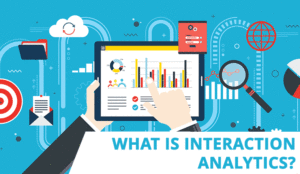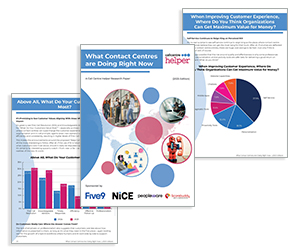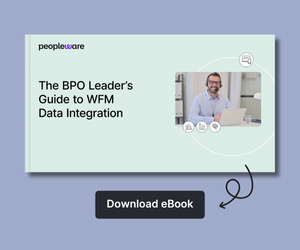Interaction Analytics refers to the processes of uncovering meaningful insights from unstructured natural language conversations – including phone calls, emails, chats, and social media conversations.
Using technologies like natural language processing, sentiment analysis and neural networks, contact centres can identify customer preferences, emotions, and pain points.
This allows organizations to uncover trends, patterns, and emerging issues from contact centre interactions.
What Is the Difference Between Speech Analytics, Text Analytics and Interaction Analytics
| SPEECH ANALYTICS | TEXT ANALYTICS | INTERACTION ANALYTICS |
|---|---|---|
| Phone Calls | Emails | Phone Calls |
| Live Chat | Emails | |
| WhatsApp Messages | Live Chat | |
| Text Messages | WhatsApp Messages | |
| CRM Data | Text Messages | |
| Letters | CRM Data | |
| Letters |
- Speech Analytics analyses spoken language, like call centre interactions, for insights.
- Text Analytics focuses on written language, extracting information from texts like emails and social media posts.
- Interaction Analytics combines speech and text analysis to gain a comprehensive view of customer interactions across channels, optimizing customer service and operational efficiency.
How Does Interaction Analytics Work?
It uses advanced technologies such as machine learning, natural language processing (NLP), and artificial intelligence (AI). The process involves:
- Transcribing and analysing voice conversations: By converting voice interactions into text, it leverages NLP and AI to identify trends.
- Detecting customer sentiment: Interaction analytics goes beyond transcription by capturing stress levels and sentiment from the customer’s voice.
- Using dashboards: Tools offer user-friendly dashboards to capture, process, and highlight critical insights.
- Real-time AI-driven predictions: By harnessing conversational data, AI tools can generate predictions and recommendations for future actions.
Key Benefits of Interaction Analytics
- Understanding unique customer needs – It helps you uncover individual customer preferences.
- Identifying product, channel, and service preferences – By evaluating multichannel interaction data, you can pinpoint which products, channels, and services resonate most with your customers.
- Customizing the customer journey – It reveals opportunities to personalize the customer experience.
- Identifying trends across the customer base – With interaction analytics, you can identify larger trends and patterns that shape your customer journey.
- Correlating success factors – Using your data correctly allows you to link customer experience success with call centre agent performance, product quality, and other variables.
- Uncovering upselling/cross-selling opportunities – It uncovers latent demand, enabling you to capitalize on upselling and cross-selling opportunities.
Can Interaction Analytics Detect Sentiment?
There are several methods used to detect customer sentiment:
Keyword Analysis
Interaction analytics can use predefined keywords and phrases associated with positive or negative sentiments to detect customer emotions in the conversations.
Contextual Analysis
Understanding the context of a conversation is essential to accurately determining sentiment. Analysing the entire interaction, rather than just isolated statements, can provide a more accurate view of the customer’s sentiment.
Emotion Detection
Advanced interaction analytics systems may incorporate emotion detection models to identify specific emotions expressed by the customers, such as happiness, frustration, anger, or satisfaction.
Does Interaction Analytics Work in an Omnichannel Environment?
In an omnichannel environment, customer interactions take place across multiple channels, and interaction analytics can be applied to all these channels to gather valuable data and extract meaningful insights. Some of the key aspects of how it can work in an omnichannel environment include:
- Data integration – Platforms can integrate data from various channels into a centralized system, making it easier to analyse and compare customer interactions across different touchpoints.
- Cross-channel insights – By analysing interactions across all channels, businesses can identify patterns and trends that span multiple channels.
- Customer journey analysis – It can help track and analyse a customer’s journey across various touchpoints, allowing businesses to identify pain points, opportunities for improvement, and areas for personalization.
- Sentiment analysis – Analysing customer interactions for sentiment helps businesses understand how customers feel about their experiences across different channels.
- Agent performance evaluation – It can be used to assess how agents handle interactions on different channels, providing valuable feedback to enhance training and optimize resource allocation.
- Real-time insights – In an omnichannel environment, real-time interaction analytics can enable businesses to respond promptly to customer issues, leading to improved customer satisfaction.
Practical Examples of Interaction Analytics Within Contact Centres
Here’s a list of some common use-cases within contact centres:
- Quality Assurance and Quality Scoring – Analysing customer interactions allows contact centre managers to monitor the quality of interactions.
- Customer Experience Improvement – Identifying recurring issues, complaints, or areas of dissatisfaction helps in understanding customer pain points and improving overall customer experience.
- Agent Performance Evaluation and Training – Analysing agent–customer interactions helps in evaluating individual agent performance.
- Root Cause Analysis – It can pinpoint the root causes of common customer issues or complaints.
- First Call Resolution (FCR) Improvement – It helps identify the factors leading to repeated calls for the same issue, so contact centres can implement strategies to enhance first-call resolution rates.
- Competitor Analysis – It can help identify instances where customers mention competitors, giving insights into market trends and customer preferences.
- Complaint Resolution and Escalation Management – Analysing customer interactions can help identify unresolved complaints or instances requiring escalation.
- Compliance With Scripting and Regulatory Requirements – Contact centres dealing with sensitive information can use interaction analytics to ensure compliance with specific scripting and regulatory guidelines.
Which Companies Supply Interaction Analytics?
Several companies provide solutions to help businesses gain valuable insights from customer interactions across various communication channels. Leading players in this field include:
These companies specialize in offering advanced speech and text analytics tools that leverage artificial intelligence and machine learning technologies. Many contact centre software providers offer interaction analytics as part of their comprehensive software stack, making it readily available for seamless implementation.
How Many Companies Use Interaction Analytics?
According to our latest data, the use of interaction analytics in contact centres has seen a notable increase in 2023, with 37.5% of operators adopting the technology, up from 28% in the previous year, 2022.
| Year | Use | Wishlist |
|---|---|---|
| 2022 | 28% | 36.2% |
| 2023 | 37.5% | 31.5% |
This rise in adoption signifies a growing recognition of the importance and benefits, whilst providers continue to develop and evolve their analytics product offering.
Should My Contact Centre Be Using Interaction Analytics?
Implementation is highly recommended, especially as more contact centres opt for digital channels. The data provides valuable insights into customer interactions across multiple channels, enabling personalized experiences and optimized strategies.
To discover more of our coverage on analytics, read these articles:
- An Introduction to… Contact Centre Analytics
- How to Unlock the Full Power of Call Centre Analytics
- A Checklist for Implementing… Speech Analytics
Author: Xander Freeman
Reviewed by: Jonty Pearce
Published On: 11th Aug 2023 - Last modified: 4th Sep 2025
Read more about - Technology, 8x8, Analytics, CallMiner, Five9, Genesys, MaxContact, NiCE, Scorebuddy, Talkdesk, Uniphore








































